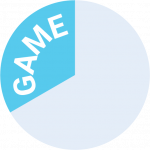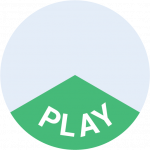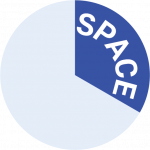(CHANGED categories) |
|||
| (2 intermediate revisions by one other user not shown) | |||
| Line 1: | Line 1: | ||
[[Category:Project]] | |||
{| | {| | ||
|- | |- | ||
| Line 55: | Line 56: | ||
| Scale_District = 1 | | Scale_District = 1 | ||
| Scale_Metropolitan = 0 | | Scale_Metropolitan = 0 | ||
|Audience_Policy_Makers=1|Scope_Large_group= | |Audience_Policy_Makers=1|Scope_Large_group=1|Scale_Undefined=0|Scale_City=0}} | ||
Redesire is a digital interactive multiplayer game developed with the intention to help various urban stakeholders understand and engage with each other's desires, wishes and expectations in fictional or actual area (re)development processes. During the game, players sit around a table and use individual tablet computers in a series of turns in order to tease out and evaluate different ideas for the redevelopment of an urban site. Players are scored based on their performance both individually and as members of a stakeholder group. Their desires are evaluated and scored by other stakeholders. The main idea of the game is based on playing with words and concepts. Prior to the game, a list of keywords (desires and issues) is compiled by stakeholders. After that, during a series of opening rounds, each player alternates by choosing a single concept from the keywords. Players assess their | Redesire is a digital interactive multiplayer game developed with the intention to help various urban stakeholders understand and engage with each other's desires, wishes and expectations in fictional or actual area (re)development processes. During the game, players sit around a table and use individual tablet computers in a series of turns in order to tease out and evaluate different ideas for the redevelopment of an urban site. Players are scored based on their performance both individually and as members of a stakeholder group. Their desires are evaluated and scored by other stakeholders. The main idea of the game is based on playing with words and concepts. Prior to the game, a list of keywords (desires and issues) is compiled by stakeholders. After that, during a series of opening rounds, each player alternates by choosing a single concept from the keywords. Players assess their | ||
concepts based on three criteria: beauty, usefulness, and feasibility. Other players assess this concept, too. After each round, players check whether the score of the concept ‘owners’ matches the scores given by other players. During their round, the players have the opportunity to change other players' opinions by writing compelling haiku and via discussion. The closer you get to the assessments of the other players, the higher your personal score. The moderator who supervises the game, can start the conversation around the concept after each round. The game is played at the table with individual players or groups (parties) who each play a stakeholder role. At the end of the game, besides players' individual scores, a map of desires has been developed which shows players' evaluation of different concepts. In addition, there is an analysis of the game behaviour of each player. The game was implemented in several projects in locations such as Nietap (2017) and Hedikhuizen (2018) in the Netherlands and was presented and tested during events like Dutch Design Week (2017) and the Games for Cities conference (2017). Redesire stimulates a ‘challenge’ aesthetics and its concomitant emotional responses. Features that make playing fun involve playing against an opponent under time pressure. Fun also exists in attempting to outsmart others, by for instance making clever haiku. Even fiddling with the RGB knobs while players predict colour code matches offers a ‘sensation’ aesthetics. As a cultural artifact that serves external actions, Redesire inverses the usual sequence of actions in planning processes. It allows policy makers, developers or interest groups to deal with people's desires and opinions in an earlier stage instead of at the end. Redesire in a sense can be seen as a stage rehearsal to play out potential drama between stakeholders in the embryonic stage, thus making the actual implementation process run more smoothly. While every party at the playing table trains their civic skills, the in-game actions of all stakeholders are being leveraged for the external actions of only a few stakeholders. In the end, the game is instrumental for developers and municipalities in the process of actual urban redevelopment. | concepts based on three criteria: beauty, usefulness, and feasibility. Other players assess this concept, too. After each round, players check whether the score of the concept ‘owners’ matches the scores given by other players. During their round, the players have the opportunity to change other players' opinions by writing compelling haiku and via discussion. The closer you get to the assessments of the other players, the higher your personal score. The moderator who supervises the game, can start the conversation around the concept after each round. The game is played at the table with individual players or groups (parties) who each play a stakeholder role. At the end of the game, besides players' individual scores, a map of desires has been developed which shows players' evaluation of different concepts. In addition, there is an analysis of the game behaviour of each player. The game was implemented in several projects in locations such as Nietap (2017) and Hedikhuizen (2018) in the Netherlands and was presented and tested during events like Dutch Design Week (2017) and the Games for Cities conference (2017). Redesire stimulates a ‘challenge’ aesthetics and its concomitant emotional responses. Features that make playing fun involve playing against an opponent under time pressure. Fun also exists in attempting to outsmart others, by for instance making clever haiku. Even fiddling with the RGB knobs while players predict colour code matches offers a ‘sensation’ aesthetics. As a cultural artifact that serves external actions, Redesire inverses the usual sequence of actions in planning processes. It allows policy makers, developers or interest groups to deal with people's desires and opinions in an earlier stage instead of at the end. Redesire in a sense can be seen as a stage rehearsal to play out potential drama between stakeholders in the embryonic stage, thus making the actual implementation process run more smoothly. While every party at the playing table trains their civic skills, the in-game actions of all stakeholders are being leveraged for the external actions of only a few stakeholders. In the end, the game is instrumental for developers and municipalities in the process of actual urban redevelopment. <gallery mode="slideshow"> | ||
File:Mockup-game.jpg 1200x0 q49 subsampling-2.jpg | |||
File:Game being played.jpg | |||
File:Game being played 2.jpg | |||
File:Game being played 3.jpg | |||
</gallery><u>The project has been selected as one of the two winners of the Call for Best Practices of the PPS Project with the following motivation</u> | |||
''“The project successfully tackles the main existing issues of a specific phase of the participatory design process: the confrontation between different stakeholders for the recognition of synergies between individual interests and objectives. The mechanics of the game are carefully studied to merge digital and in-person interaction. A key value of the project is the possibility to be replicated in different contexts, offering a useful resource for designers, planners, policy makers and citizens.”'' | |||
''IAAC'' | |||
''“Redesire combines the best of both the digital and human capabilities. By leaving the process up to technology but the interpretation to human intellect, this game with creative, playful features allows players to discuss, imagine and conceptualize new features for the public space. For a game that is all about dialogue and showing different perspectives on the same area, this proven concept qualified itself to earn a spot on the winners’ list”'' | |||
''BUAS'' | |||
''“Redesire is a game about comparing different points of view and is a way to avoid misunderstandings and to generate a common point of view. It also qualifies and quantifies the values of the individual participants. In many ways the game is a metaphor for living in the city. So play is very appropriate as an element of a placemaking process because it tends to build a common consciousness over an area.”'' | |||
''CLAC'' | |||
<br /> | |||
* '''[[State of the Art Catalogue|<<<<<<< GO TO "STATE OF THE ART CATALOGUE" WIKI PAGE]]''' | |||
* '''[[Virtual Environments as a Technological Interface between Cultural Heritage and the Sustainable Development of the City|GO TO "Virtual Environments as a Technological Interface between Cultural Heritage and the Sustainable Development of the City" WIKI PAGE >>>>>>>]]''' | |||
Latest revision as of 15:33, 10 July 2021
Author: |
REzone |
Tilburg, Netherlands, 2016 | |
| http://rezone.eu | |
Redesire is a digital interactive multiplayer game developed with the intention to help various urban stakeholders understand and engage with each other's desires, wishes and expectations in fictional or actual area (re)development processes. During the game, players sit around a table and use individual tablet computers in a series of turns in order to tease out and evaluate different ideas for the redevelopment of an urban site. Players are scored based on their performance both individually and as members of a stakeholder group. Their desires are evaluated and scored by other stakeholders. The main idea of the game is based on playing with words and concepts. Prior to the game, a list of keywords (desires and issues) is compiled by stakeholders. After that, during a series of opening rounds, each player alternates by choosing a single concept from the keywords. Players assess their
concepts based on three criteria: beauty, usefulness, and feasibility. Other players assess this concept, too. After each round, players check whether the score of the concept ‘owners’ matches the scores given by other players. During their round, the players have the opportunity to change other players' opinions by writing compelling haiku and via discussion. The closer you get to the assessments of the other players, the higher your personal score. The moderator who supervises the game, can start the conversation around the concept after each round. The game is played at the table with individual players or groups (parties) who each play a stakeholder role. At the end of the game, besides players' individual scores, a map of desires has been developed which shows players' evaluation of different concepts. In addition, there is an analysis of the game behaviour of each player. The game was implemented in several projects in locations such as Nietap (2017) and Hedikhuizen (2018) in the Netherlands and was presented and tested during events like Dutch Design Week (2017) and the Games for Cities conference (2017). Redesire stimulates a ‘challenge’ aesthetics and its concomitant emotional responses. Features that make playing fun involve playing against an opponent under time pressure. Fun also exists in attempting to outsmart others, by for instance making clever haiku. Even fiddling with the RGB knobs while players predict colour code matches offers a ‘sensation’ aesthetics. As a cultural artifact that serves external actions, Redesire inverses the usual sequence of actions in planning processes. It allows policy makers, developers or interest groups to deal with people's desires and opinions in an earlier stage instead of at the end. Redesire in a sense can be seen as a stage rehearsal to play out potential drama between stakeholders in the embryonic stage, thus making the actual implementation process run more smoothly. While every party at the playing table trains their civic skills, the in-game actions of all stakeholders are being leveraged for the external actions of only a few stakeholders. In the end, the game is instrumental for developers and municipalities in the process of actual urban redevelopment.
The project has been selected as one of the two winners of the Call for Best Practices of the PPS Project with the following motivation
“The project successfully tackles the main existing issues of a specific phase of the participatory design process: the confrontation between different stakeholders for the recognition of synergies between individual interests and objectives. The mechanics of the game are carefully studied to merge digital and in-person interaction. A key value of the project is the possibility to be replicated in different contexts, offering a useful resource for designers, planners, policy makers and citizens.”
IAAC
“Redesire combines the best of both the digital and human capabilities. By leaving the process up to technology but the interpretation to human intellect, this game with creative, playful features allows players to discuss, imagine and conceptualize new features for the public space. For a game that is all about dialogue and showing different perspectives on the same area, this proven concept qualified itself to earn a spot on the winners’ list”
BUAS
“Redesire is a game about comparing different points of view and is a way to avoid misunderstandings and to generate a common point of view. It also qualifies and quantifies the values of the individual participants. In many ways the game is a metaphor for living in the city. So play is very appropriate as an element of a placemaking process because it tends to build a common consciousness over an area.”
CLAC
- Project
- Purpose Activation
- Purpose Raise awareness
- Purpose Visualise needs
- Purpose Decision making
- Purpose Designing
- Co-Creation Co-analysis
- Co-Creation Co-design
- Outcome Decision making
- Outcome Assesment
- Outcome Design
- Outcome Awareness
- Mechanics Role play
- Mechanics Rule based play
- Mechanics Location based
- Mechanics Simulations
- Mechanics Hypothesis
- Technology Tools Audio Visual
- Technology Tools Digital Interface
- Aesthetics Sensation
- Aesthetics Imagination
- Aesthetics Realism
- Scale District
- Scale Neighbourhood
- Scale Street
- Audience Planning expert
- Audience Policy Makers
- Scope Small group
- Scope Large group
- Scope Pre-defined






